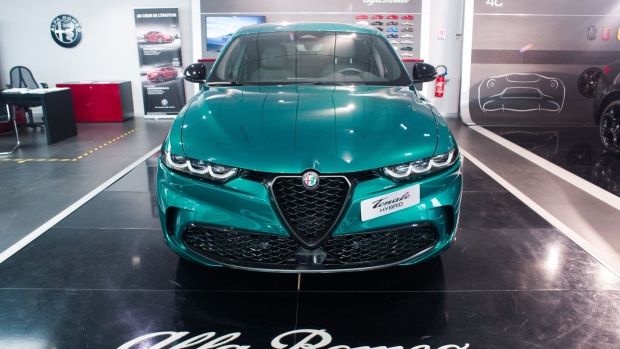Feb 22, 2023
Stellantis to Buy Back $1.5 Billion Shares After Record Year
, Bloomberg News

(Bloomberg) -- Stellantis NV gained after the carmaker unveiled a share buyback of as much as €1.5 billion ($1.6 billion), following Mercedes-Benz AG and BMW AG in returning cash to shareholders after high prices and pent-up demand boosted results.
Operating returns rose to 13% last year, Stellantis said Wednesday, beating expectations even as persisting supply-chain snarls disrupted vehicle deliveries during the second half. Industrial free cash flow was also well ahead of analyst forecasts. The shares gained as much as 3.4% in Milan and were up 1.7% as of 11:45 a.m.
“It’s a very solid print,” Oddo BHF analyst Michael Foundoukidis wrote in a note. Stellantis “surprised positively” with the buyback.
The company, forecasting another year of double-digit returns, expects vehicle price rises to slow from last year’s significant hikes as chip shortages ease and production picks up. Lower raw material costs, particularly on steel, will help temper price inflation, Chief Financial Officer Richard Palmer said.
“Price increases were substantial in 2022 and they will be lower in 2023,” Palmer told reporters on a call. “The challenge for 2023 is to offset inflation with pricing but also with an improvement in the industrial efficiency.”
Problems in moving finished cars to dealers should improve in the first half, the CFO said. Automakers are still struggling to source enough parts, with logistics disruptions adding to the fray to delay deliveries. Truck driver and train shortages during the second half left thousands of cars stuck around at Stellantis’s Sochaux plant in eastern France, with peer Volkswagen AG also reporting that disruptions left it with a glut of unsold vehicles.
While the problem was industrywide, Stellantis was likely hit harder as it sought to combine logistics operations following its merger of Fiat Chrysler and PSA Group at a time of significant stress in global logistics operations, the CFO said.
The disruptions came up initially in moving cars “from plants to compounds and from compounds to dealers,” Palmer added. “We’ve largely resolved the issue from plants to compounds” and lingering constraints in delivering finished cars to dealers are improving.
Meanwhile, chip supplies also “continue to be a problem,” Palmer said. “We are seeing a slow but steady improvement” but shortages are unlikely to be fully resolved in 2023, he added.
Strong Orders
Stellantis’s order book remains strong, Palmer said, chiming with peers across the industry citing pent-up demand as a buffer against a slowing global economy. While price cuts at carmakers including Tesla Inc. and Ford Motor Co. on EVs don’t bode well for the months ahead, Stellantis rival Renault SA this month said it expects rising returns after overhauling its model offering.
Incentives to entice buyers could increase in North America through the year as supply improves “but at the moment we are not seeing any significant moves from our competition, Tesla aside,” Palmer said. “Everyone is still being very disciplined on the pricing front but it’s good to plan for some level of price stabilization in 2023.”
Stellantis said all of its regions were growing and delivering record profitability last year, including Europe. The manufacturer will pay a dividend of €1.34 a share, up from €1.04 the previous year. Combined with the buyback, the company is planning to return about €5.7 billion to shareholders.
The buyback will run through the end of the year, Stellantis said. Separately, the company will redistribute more than €2 billion to its employees globally thanks as the maker of Jeep SUVs and Peugeot cars seeks to protect its workforce from higher inflation.
(Updates with analyst comment in third paragraph, additional CFO comments throughout. A previous version of the story corrected the currency.)
©2023 Bloomberg L.P.





